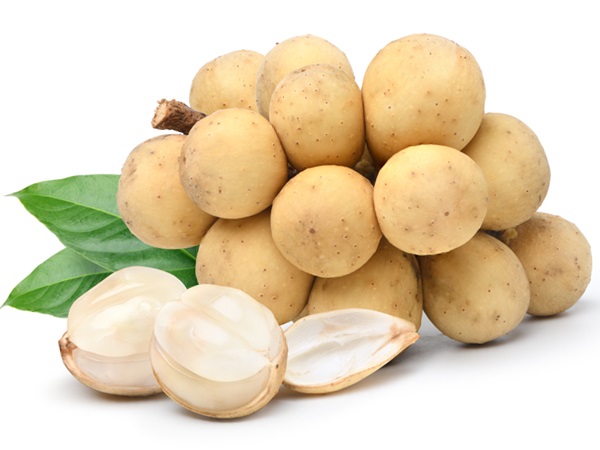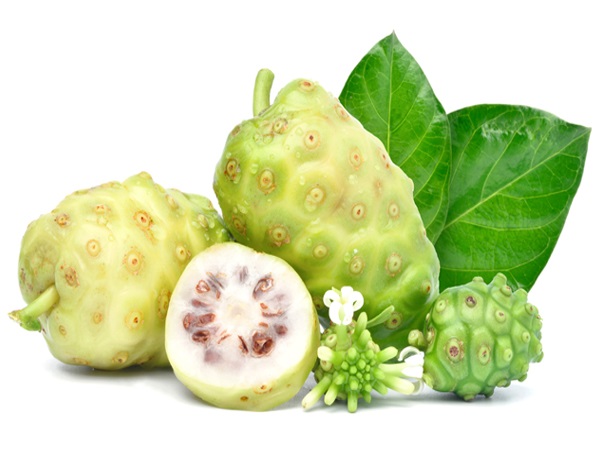We couldn’t be more thankful to mother nature for the incredible bounty of food treasures. But suppose you are tired of eating the same fruits repeatedly and are looking for a quirky addition to your diet. In that case, the list of weird fruits mentioned in this article can be an excellent addition. Without consuming one or more weird fruits, you can’t call yourself an adventurer.
And you don’t have to travel around the world to taste these gorgeous fruits. Due to glocalization, you can eat anything in the comfort of your home. We have prepared a list of weird fruits available around the globe giving your palette an exotic aftertaste.
15 Top Weird Fruits Around The World:
Whether going to an exotic fruit shop or joining a fruit club serving a wide variety of fruits. You can taste any weird fruit you want as long as you know what you would like to try. This article gives you a glimpse into the top weird fruits you can add to your must-try list.
1. Lucuma:
Lucuma is a fruit native to the Andean valleys of Chile, Ecuador, Peru, and Bolivia. This fruit has a mealy and dry texture which is very sweet and is bright yellow. The flavor of this fruit is similar to butterscotch, maple syrup, or sweet potato. Lucuma fruit is used in milkshakes, ice creams, or juice as a flavored addition in Peru. In chile, this fruit is harvested from June to November, whereas in Peru, it is harvested from October to March.
2. Pacay / Guama (Ice Cream Bean):
Pacay is a native fruit to South America and is also known as ice cream-bean, cuaniquil, guama, or Guava. This fruit belongs to the legume family Fabaceae in the mimosoid tribe. The indigenous Amazonians grow them to produce alcoholic beverage cachiri, medicine, timber, food, and shade. It might look like a giant pea pod at first glance. However, you will find substantial black seeds encased in a white pulp when you crack them open. The pulp is described to taste similar to vanilla ice cream.
See More: Best Edible Flowers Around The World
3. Kiwano AKA African Cucumber/Horned Melon:
Kiwano is one of the weird exotic fruits that is beautiful and otherworldly looking. Native to sub-Saharan Africa, this fruit is filled with yellow and green seeds and bright orange spiky skin. You can get a lemony cucumber taste from the vibrant flesh. This fruit is a member of the cucumber family and African descent. The fruit’s flavor has a hint of banana and is mild compared to cucumber or lime. You can use this fruit in smoothies juice, stir it into yogurt or use them in salads.
4. Black Sapote:
Black sapote is a species of persimmon that is also called Diospyros nigra. Chocolate pudding fruit, black soap apple, and zapote Prieto are some of the common names of this fruit. Native to Mexico, Central America, and Columbia, Sapote often refers to edible, soft fruit. The fruit is both appealing and highly unusual because the color of the fruit is associated with chocolate pudding.
5. Buddha’s Hand:
Buddha’s hand is one of the weird citrus fruits because it looks literally like a hand representation of Buddha. There is no pulp or fruit to consume, and therefore it is used for lemony zest or peel in most recipes. All you have to do is break a finger and grate it over your food. Many people use this fruit as a decorative with its beautiful floral aroma, which might last up to two weeks.
6. Feijoa:
Feijoa is a small evergreen tree related to the Guava called pineapple guava or guavasteen. This fruit is cultivated in mild dry climates and is native to Southern Brazil, Uruguay, Paraguay, and Argentina. Feijoas are a sweet fruit with mint, pineapple, and apple flavors and mature in autumn. Although the fruit has a complex taste making it a good option for smoothies, it is commonly eaten by scooping the exterior with a spoon after cutting the fruit in half.
7. Soursop AKA Guanabana:
Soursop fruit is native to the tropical regions of the Caribbean and Americas though the exact origin is unknown. The fruits flavor is like a combination of strawberries, apple with sour citrus flavor notes with an aroma similar to pineapple. The underlying thick creamy texture of this fruit reminds you of a banana. This fruit is best suited for fruit juice drinks or smoothies.
8. Jabuticaba:
Jabuticaba is a weird tropical fruit with a grape flavor similar in size to a plum. Because of its strange growing habits, this fruit is also called the Brazilian tree grape. Jabuticaba grows on the trunk and branches of the Jabuticaba tree, unlike most fruits that grow on a vine. You can either prepare a jelly, ferment them to make wine, or eat raw fruits.
9. Gac AKA Baby Jackfruit:
The visual appearance is where the similarity between Baby Jackfruit or Gac to the Jackfruit ends, and it is a rare food because of its abridged harvest season. This is why baby jackfruit is used for festive or ceremonial occasions. Initially grown in Vietnam, the farming of Gac has expanded to California and Australia. This fruit grows on vines and is the size of a small melon. Cochinchin gourd and Spiny bitter gours are other names for this weird fruit.
10. Cempedak:
Cempedakis one of the strangest fruit whose interior structure is similar to Jackfruit as it is Jackfruit’s close relative. However, the individual pulpy fruits are a less sweet version of the Jackfruit and can be eaten straight out of the fruit. You can smell this fruit from quite some distance because it has a powerful fragrance. You need to use an oil-based product while opening a Cempedal because it releases a sticky juice.
11. Langsat:
Langsat fruit is one of the weirdest fruits that look similar to a small potato, though the fruit’s inside is another ball game. When you leave your skin on, these orb-shaped fruits look identical to a potato. However, it tastes taste a little like grapefruit when ripe. Although you can cook Lansat, eating them out of your hands can be the simplest way to eat this fruit.
12. Noni Fruit:
Noni fruit originated from Southeast Asia belongs to the coffee family and is also called cheese or starvation fruit. When ripened, this fruit has a pungent odor, earning it the name vomit fruit. Noni fruit is initially green, slowly turning yellow and almost white as it ripens. This oval-shaped fruit is loved by many, though it has a bitter taste.
Although little has been proven, many different health claims have been made about the fruit. The high antioxidant content of the fruit may offer some additional benefits. In addition, the juice from the fruit is bitter, so people tend to use it as part of a fruit juice or smoothie so that the taste can be masked.
13. Rambutan:
Rambutan might look scary-looking because of those spiky-looking hairs, but they won’t hurt you. With a soft and juicy pale interior, this stunning fruit has a texture and flavor similar to lychee. Rambutan is one of the strange-looking fruits native to Indonesia and Malaysia. However, it is also grown in Africa, Hawaii, and other parts of the world and is a weird Asian fruit.
Rambutan has a small pit with a sweet, slightly tart flavor and grape-like texture. This fruit has spines called spinterns over its red skin. These fruits are found either fresh or tinned only in specialty stores because they are highly perishable.
14. Prickly Pear:
You are for sure mistaken if you think a prickly pear is indeed a pear. However, Prickly Pear is America’s native cactus. Therefore, you will be able to consume the fruit and the pads. Often the prickly parts of the fruit are removed when you buy it from a store. You can drink this fruit in jelly, plain, syrup, or candy form. It is a rich source of vitamin C, calcium, and antioxidants, with a taste similar to a watermelon.
15. Breadfruit:
As the name suggests, the Breadfruit tastes similar to bread and offers several health benefits. The name of this fruit is derived from the moderately ripe fruit texture, and it is pretty much identical to a slight potato-like flavor and freshly baked bread. Many tropical regions consume this fruit as a staple food. Apart from eating, the Breadfruit is also used as an insect repellant. This fruit is imported from the West Indies, particularly Jamaica, South Florida, in the US. You can find this fruit from June through October.
Interesting Facts About Weird Fruits:
Here are some weird facts about the fruits you might find interesting:
- Many assume the fruit Kiwi is from Australia or New Zealand, but that’s not the case. Instead, the fruit was called Chinese gooseberry until 1959, initially grown in China.
- Strawberries have marks called achenes, and the seeds are inside these achenes.
- Strawberries have more vitamin C ounce for ounces than oranges, grapefruit, lemons, and limes.
- Sumo oranges or mandarin oranges are pretty expensive fruits because their growth takes four years.
- Many think bananas have the most potassium. But when compared to bananas, avocados, dried apricots, and watermelon have more potassium.
- When spoilt, apples and other fruits release a gas called ethylene which might degrade closer fruits.
- Almonds are closely related to peaches because they come from the prunus genus of trees and shrubs.
Many of us are interested in including fruits in our diet. But some of us are always curious about trying something out of the box. This article presents you with a list of weird fruits that you can know before putting them into your diet. Don’t forget to let us know if you found this article helpful!
FAQ:
1. Which Is The Oldest Fruit In The World?
The date palm fruit, also called heavenly fruit or date, has been known since the ancient days. It is also mentioned in many religious scriptures.
2. Which Fruit Is The Most Unpopular?
Durian is a fruit that has an intense aroma with a savory smell. The sizeable spiky fruit is the most unpopular, especially for foreigners.
3. Which Is The Largest Fruit In The World?
Atlantic giant pumpkin, which weighed over a ton, is the most significant recorded fruit. However, there is an ongoing debate about whether pumpkin is a fruit.
Disclaimer:
The information provided in the article is based on research and for informational and educational purposes. The website is not responsible for the authenticity and accuracy of the information.
























































































































